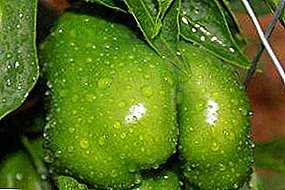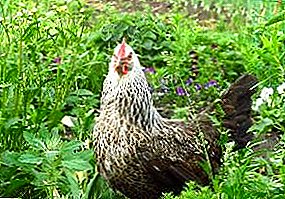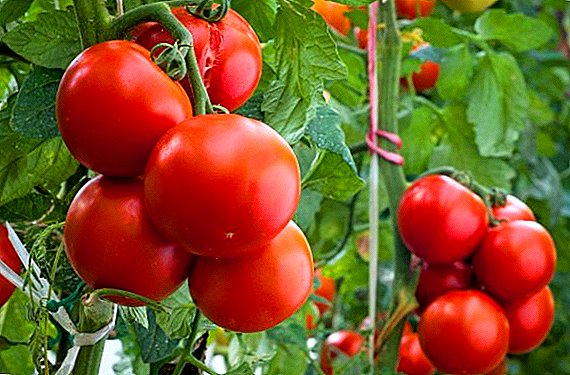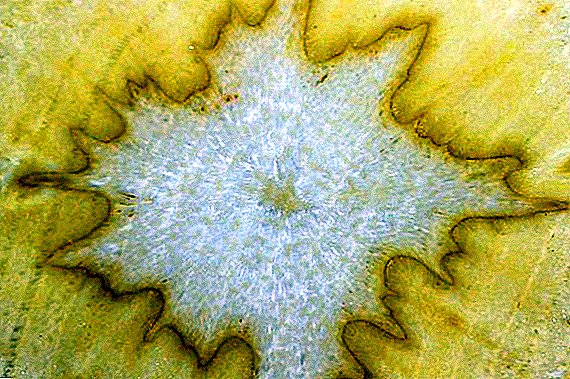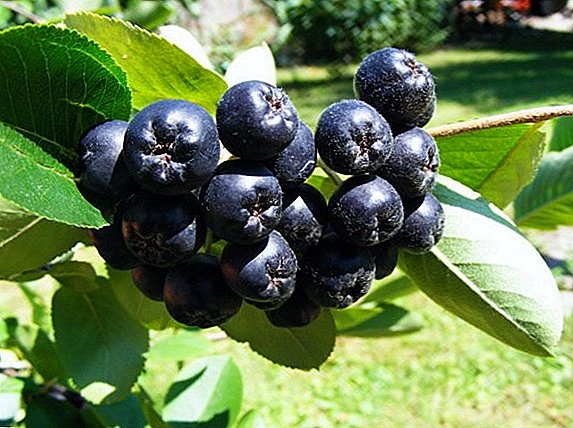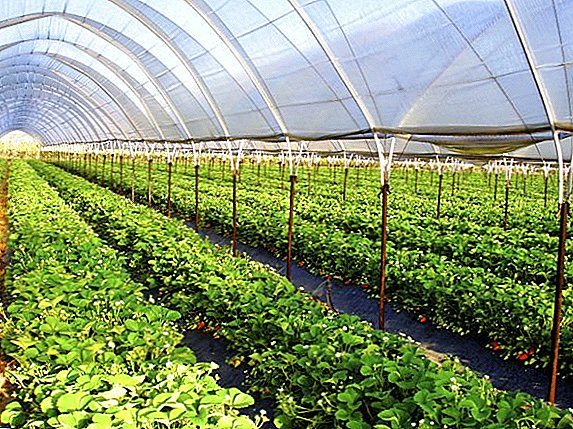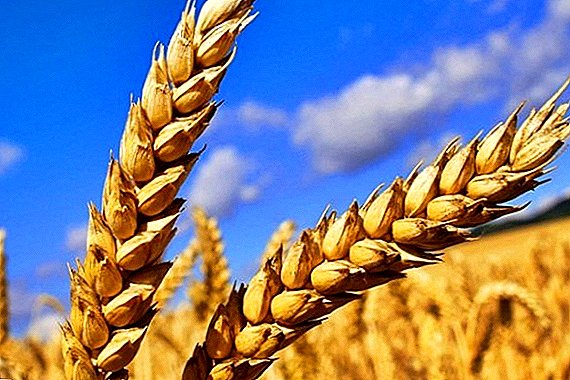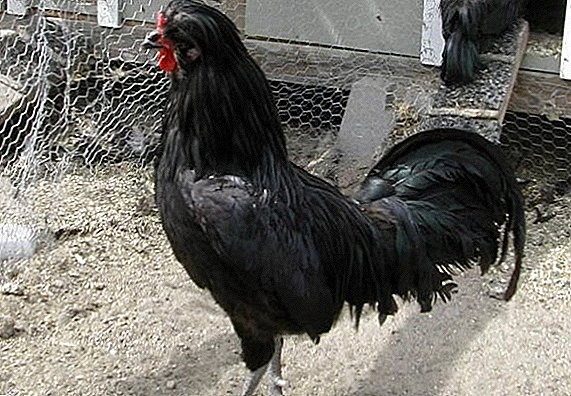 Most of the meat and egg breeds of chickens were obtained by crossing representatives of meat and egg breeds, which led to the loss of high rates of bird productivity. Therefore, they are mainly used by amateur poultry breeders and as a genetic reserve. This feature allowed the breeders to revive the lost for a long time breed Krevker - we consider it in the article.
Most of the meat and egg breeds of chickens were obtained by crossing representatives of meat and egg breeds, which led to the loss of high rates of bird productivity. Therefore, they are mainly used by amateur poultry breeders and as a genetic reserve. This feature allowed the breeders to revive the lost for a long time breed Krevker - we consider it in the article.
History reference
Crevker is the oldest French breed of chickens. The full history of its origin is unknown. Definite is the fact that it received the name from the commune of Crevevector-en-Auge in Normandy. In 1855, the chickens of this breed won a number of prizes at the international exhibition Universelle.
Despite this, the breed standard has not been adopted for 14 years. The number of Krevkers significantly decreased after the First World War, and after the Second World War it was believed that the breed was almost lost. Only in 1976, French breeder Jean-Claude Perique engaged in the revival of the breed. Now krevkerov bred more for exhibitions than for their needs. 
Did you know? In 2007, FAO (the Food and Agriculture Organization of the United Nations) classified the Krevker breed as endangered.
Description and features
Krevker is a representative of meat and egg breeds, therefore, it is endowed with their main qualities:
- endurance;
- unpretentiousness;
- good fertility;
- high survival rates of young animals and adults.
Exterior
Representatives of the breed are distinguished by bright black plumage with various shades (turquoise, brown, bluish), rarely there are birds of white, blue, speckled color. Feathers fit snugly to their torso. 
Meat-egg also includes the following breeds: Gudan, Moscow Black, Plymouth, Tricolor, Leningradskaya Golden-Gray, Forverk, Maran.
The main feature of Krevker are lush tuft, beard, sideburns and mane (in males). In front of the tuft there is a red V-shaped ridge, resembling horns. The lobes are small, red. The eyes are large, yellowish, shiny. The beak is black.
The strong muscular body keeps on short bald legs of gray color. There are five toes on the legs. Neck and back curved, strong. Chest wide, slightly sticks forward. The wings are small, slightly rounded, tight to the body.
Rooster and chicken: the differences
Like all animals, Krevker males are larger than females. Roosters weigh 3.5-4.5 kg, layers - 2.8-3.5 kg. In addition to their size, they are distinguished by the crest: for roosters, it consists of thin feathers falling on the back of the head, and in females, from thick broad feathers, fan-shaped and standing. It is not always possible to discern the comb behind the fluffiness of the tuft. It is distinguished by layers and a fluffy, spreading tail, similar in shape to a tuft. In the cock, the tail consists of individual sickle-shaped feathers. Also, the males have a falling mane, smoothly turning into a tail.
Temperament
Roosters differ in fighting character: they zealously protect their chosen ones and the territory from uninvited guests. With such a temper, it will be difficult to keep them in the common hen house - finding out the relations between the rivals cannot be avoided, therefore a separate pen is needed for Krevkers.  In females, the character is the exact opposite: they are calm, peaceful, distinguished by cumbersome and phlegmatic. For them, the main thing is their home and master. A very strong bond is established between them and the owner: it is so strong that it can drive the birds into anguish during a long separation from the owner, so the hens will never move far from the chicken coop in search of food.
In females, the character is the exact opposite: they are calm, peaceful, distinguished by cumbersome and phlegmatic. For them, the main thing is their home and master. A very strong bond is established between them and the owner: it is so strong that it can drive the birds into anguish during a long separation from the owner, so the hens will never move far from the chicken coop in search of food.
For the breed is characterized by the habit of digging in manure heaps.
When they start to nest and what egg production
Norman hens do not differ in fast maturation, but their first clutches consist of large eggs. Approximately the onset of egg production falls on the 6-8 month old hens. Sometimes there may be a delay in ripening.
For a good egg production chickens should take care of the vitamins in their diet.
On average, one egg weighs about 60 grams. The shell is all white. For a year, the hen produces 150-170 eggs.
Hatching instinct
For all its beauty and other positive qualities, the Norman chicken is not distinguished by good hatching rates. We can say that this instinct is practically absent from them.
Important! If among your livestock poultry there are turkeys, then negligent hens' eggs can be thrown to turkeys. They will calmly accept recruitment and raise chickens like their own.
In addition, because of their slowness, they can easily crush or lose an egg. Therefore, for breeding the breed, it is necessary to acquire an incubator. 
Feeding ration
For the normal development of the chicken is important not only the menu, but also the meal schedule. This and should be guided in the preparation of the diet of birds.
Young
- For chickens, nutrition is much more important than for adult birds. The smallest, at the age of 10-15 days, should receive food every two hours. A little older - every three hours. At the age of 40 days they can be transferred to five meals a day. Such a regime must be observed up to the age of four months, and then transferred to three meals a day.
- The menu of chickens of the first week of life should contain crushed boiled eggs, mixed with cereals, chopped greens, crumbly curd, yeast. From the month you can give special food, the appropriate age of the chicks.
- So that the baby fled faster and hurt less, you can add fish oil to the mash.
- The growing body is very sensitive to bacteria, so after feeding it is necessary to thoroughly disinfect the container, removing food debris.

Adult chickens
The menu of adult chickens should be balanced. Dry feed does not suit this breed, so it is best to mix the grain with wet mash. It is necessary to feed birds twice a day: in the morning and in the evening.
Homemade mash is suitable for breakfast. Its single recipe does not exist - each aviary itself decides what to add there. The main thing is that it is satisfying, so that the birds can get energy for the whole day. Usually, the basis of the mash is any grain crop, and vegetables, roots, tops, and greens are added to it. You can add fish or meat and bone meal, vitamins. To mash became wet, pour broth, yogurt or boiled water into it. Any liquid should be about 300 ml per kilogram of dry food. Dinner can be made from cereals.
Important! In winter, it is advisable to transfer birds to three meals a day, and the daily feed rate can be increased by 10-15%.

During the molting period
When a hen changes its plumage, it needs a lot of vitamins (B1, B3, A, D) and minerals (iodine, manganese). These elements can be obtained from greenery, fodder beets, berries. In the autumn, instead of greens and berries, boiled vegetables can be given. It will be useful to include in the diet cottage cheese, fish and bone meal, shells, chalk - these are sources of calcium and magnesium, the main building elements.
The molting process can be reduced with the help of nutritious feeds, in which the balance of methionine and cystine is maintained.
Necessary conditions for the content
To keep chickens you don’t need to build a chicken coop on purpose - you can remake old outbuildings like a barn. The main thing is to know all the details on the equipment of the house.
Requirements for the house
The house for the Norman beauties needs to be built on a hill. Under it should be sandy soil. The structure should be carefully insulated and sealed gaps, so that there are no drafts. It is best to build a building of wood, and the roof is made of slate, reed, straw. On the floor must be a bed of sawdust, straw, peat. Peat as a litter is the most suitable option, as it absorbs moisture well. Its layer should be 6-8 centimeters thick. After a couple of days, the litter needs to be updated by mixing the new with the old. This will maintain the friability of the coating and dryness of the room. Ventilation should be done to adjust humidity.
It is useful to learn how to build a chicken coop and do the ventilation in it with your own hands.
 12-15 kg of peat, about 20 kg of straw, 10 kg of sawdust or shavings are spent per bird per year.
12-15 kg of peat, about 20 kg of straw, 10 kg of sawdust or shavings are spent per bird per year.
Perches should be built at a height of 60 centimeters from the floor and on the opposite sunny side of the chicken coop. As a perch, you can use a planed wooden bar of rounded section.
It is imperative to build feeders and drinkers - they should be fixed so that the bird could not turn over the tank. Also, they should not be wide and deep, otherwise the chicken will be able to climb into it and add dirt and microbes to the food.
Learn how to build feeders and drinkers for chickens with their own hands.
Walking yard
Breed belongs to walking, so they need a territory for promenades. Its area depends on the livestock of your chicken coop: 1.5 square meters is enough for one individual. The paddock should be fenced, as Krevker loves to fly, but not high and not over long distances. 
How to endure winter cold
Krevker - heat-loving birds. They suffer cold very badly because their ridge is sensitive to low temperatures. Also, the chicken does not like the wind and rain - all this should be taken into account when arranging the house.
Familiarize yourself with the peculiarities of keeping chickens in winter, as well as ways to increase their egg production in winter.
Is it possible to breed in cages
The breed is not suitable for breeding in cages, as it needs, despite its melancholic temper, free space.
Advantages and disadvantages
Pros:
- although the breed is not meat, the meat of its representatives has excellent taste;
- bird simplicity;
- good performance.
 Minuses:
Minuses:
- rare view;
- does not tolerate frosts;
- there is no incubation instinct.
Did you know? The first meat and egg breeds appeared in the States in the second half of the XIX century. They were taken out especially for the content on the ranch.
Representatives of the Krevker breed will be a real decoration of any chicken coop: with proper care and good conditions of detention, they will delight you with excellent meat and good egg-laying performance. But Krevkers are hard to find in bird markets, as the breed is rather rare.


